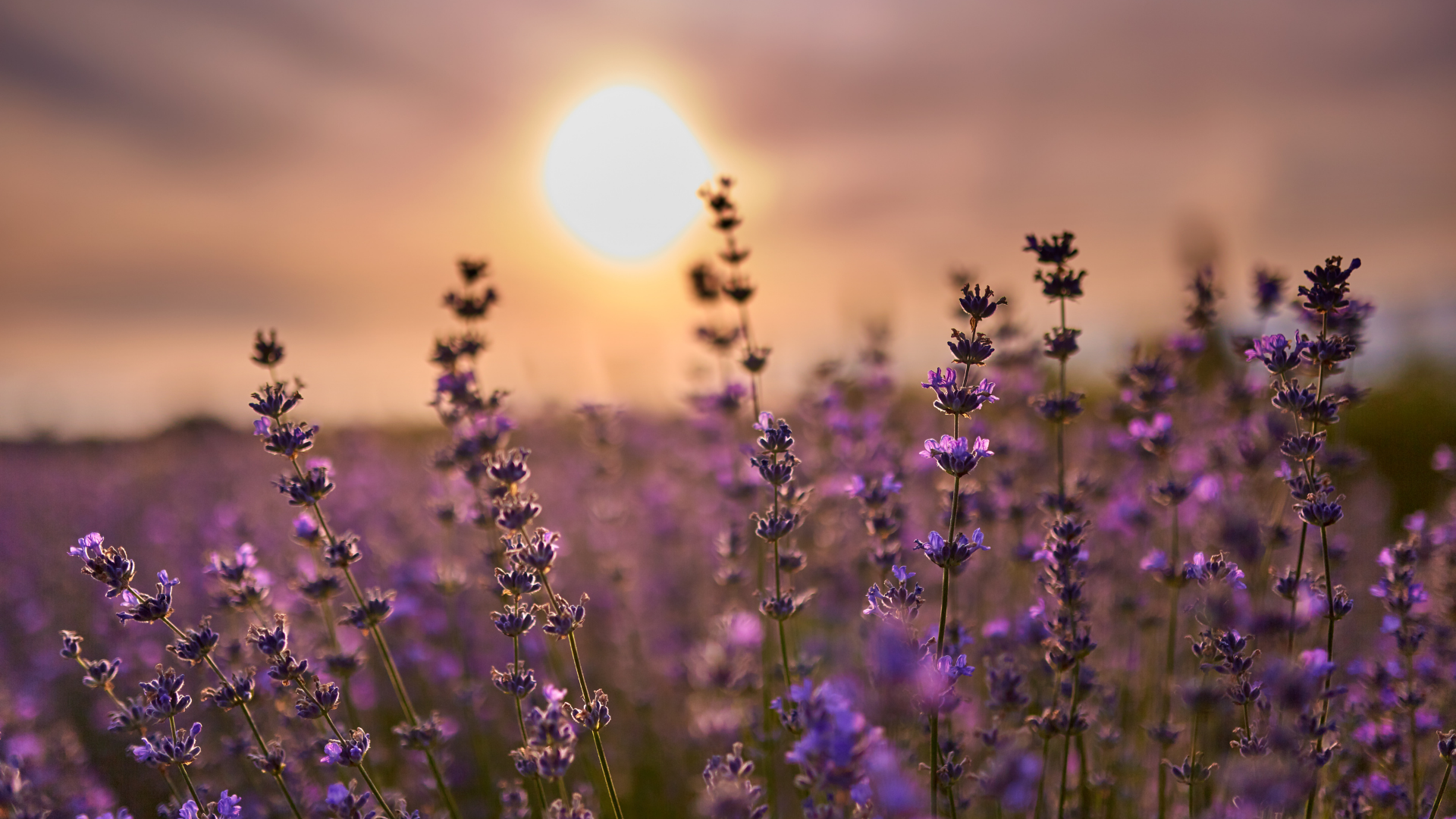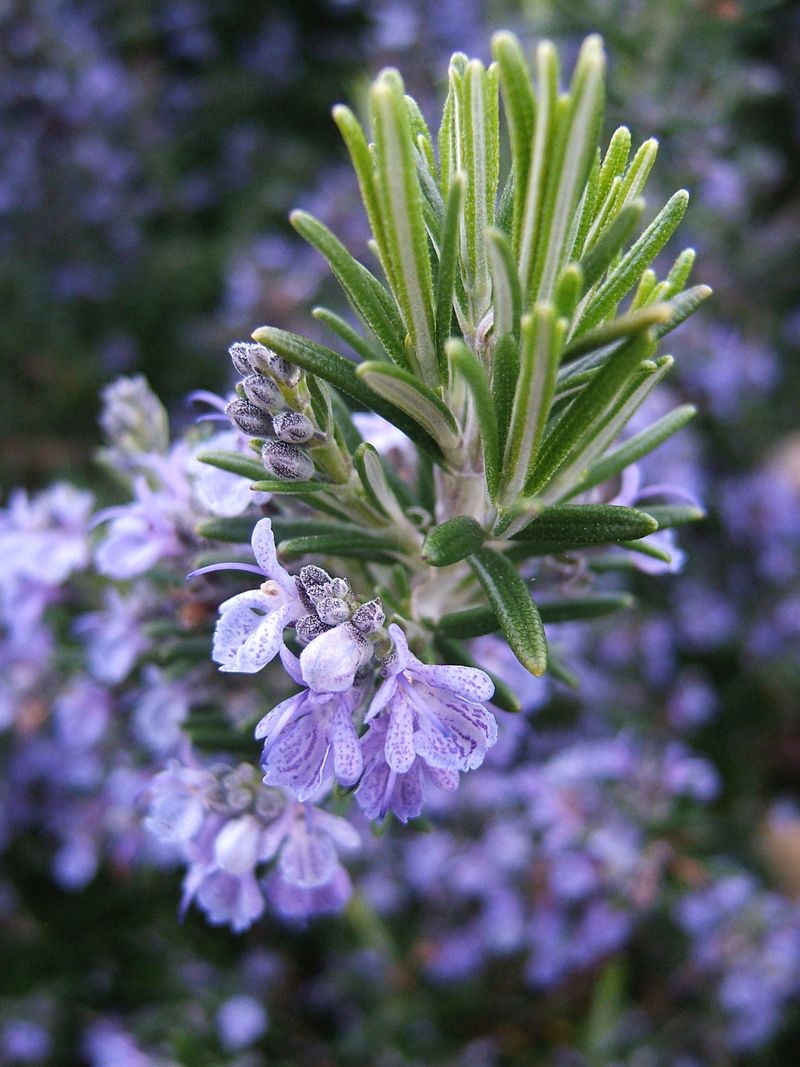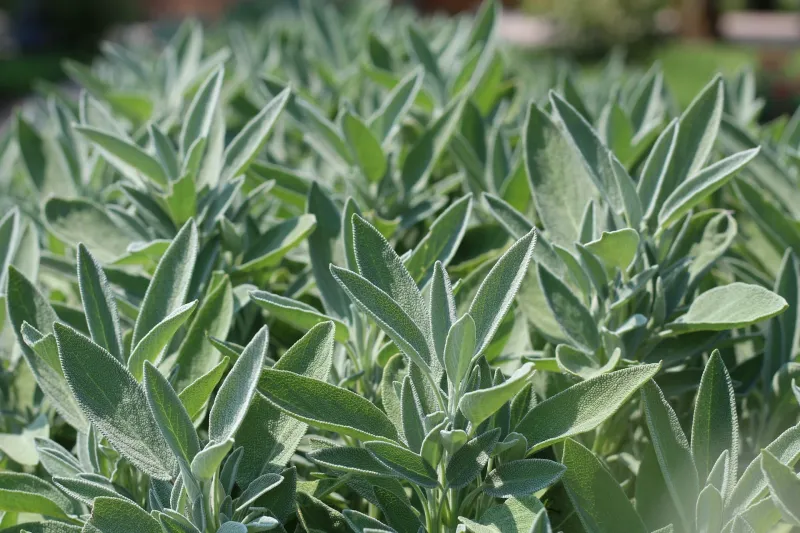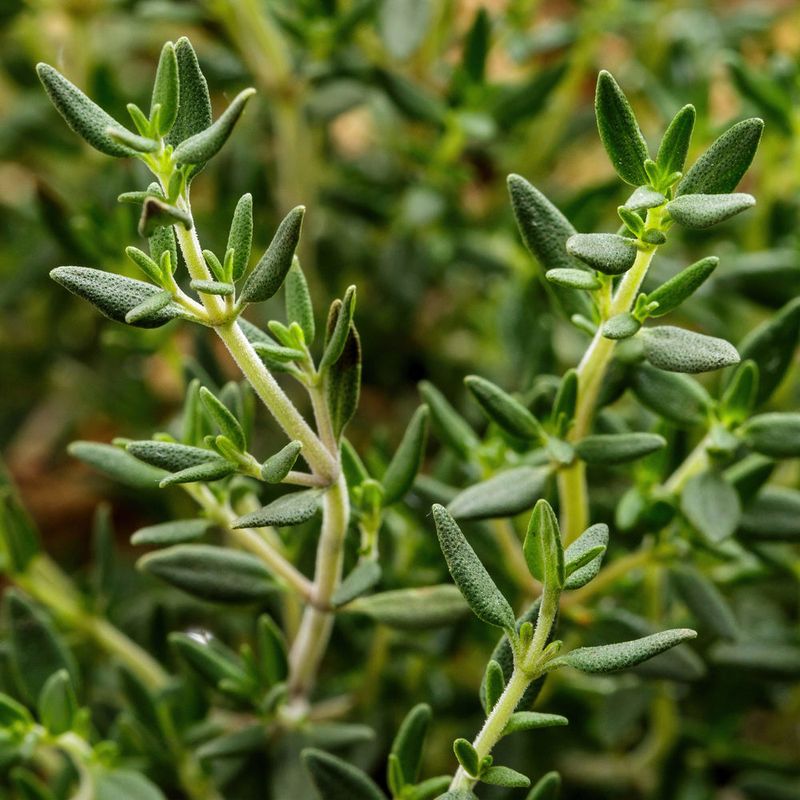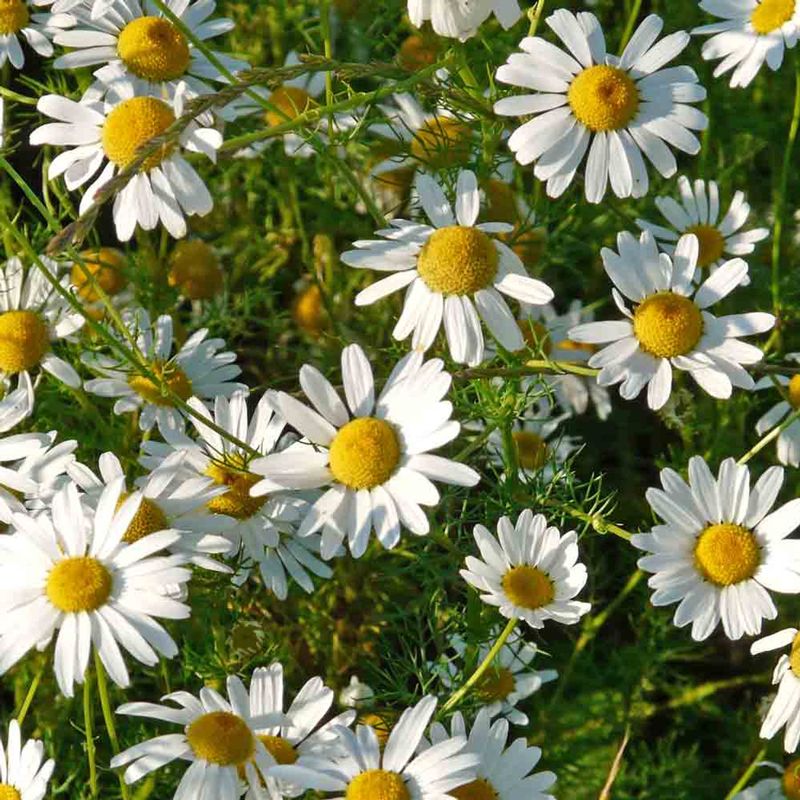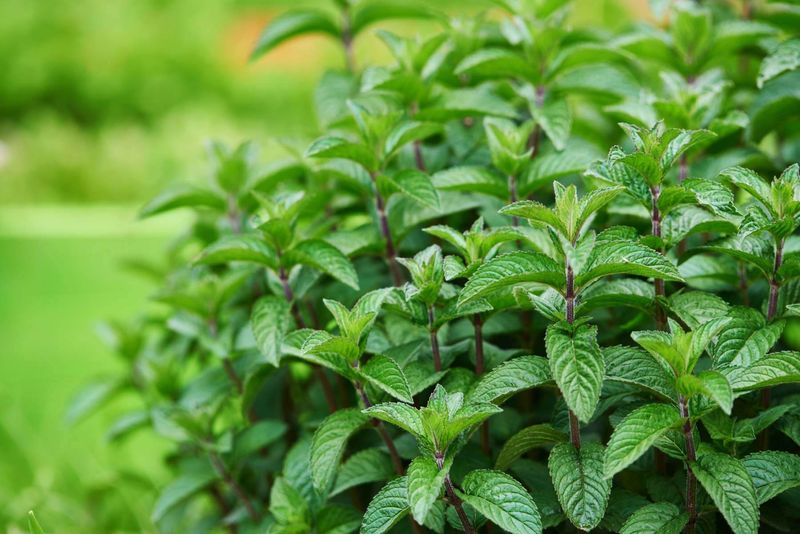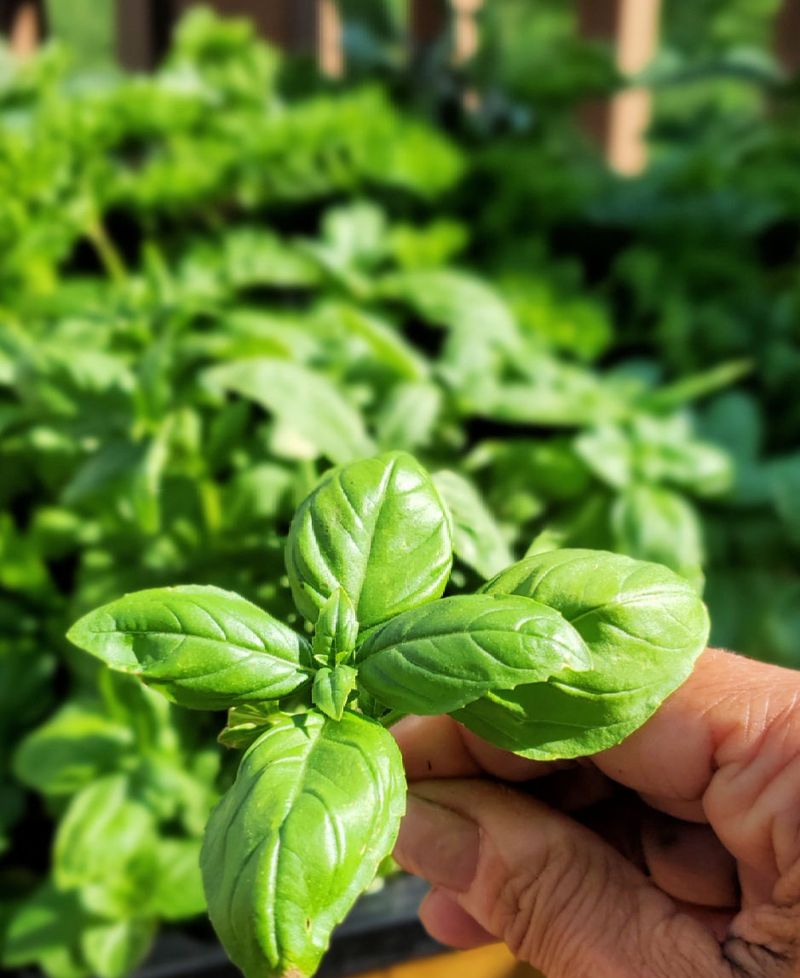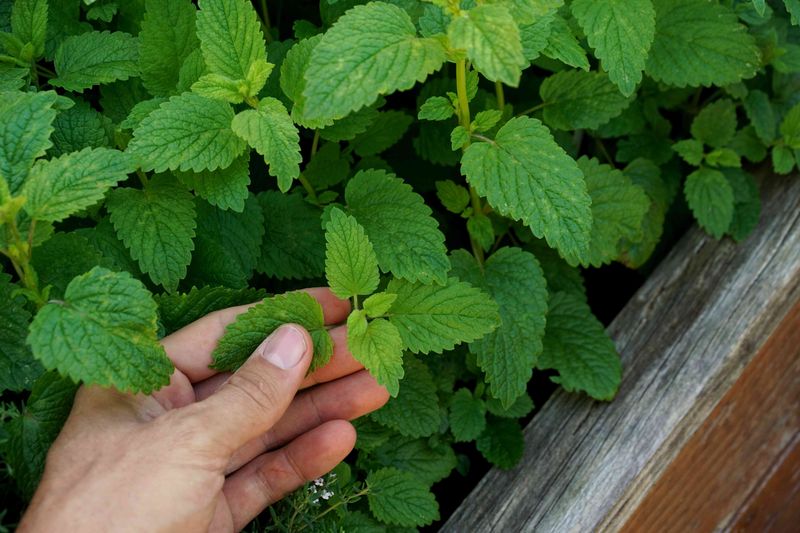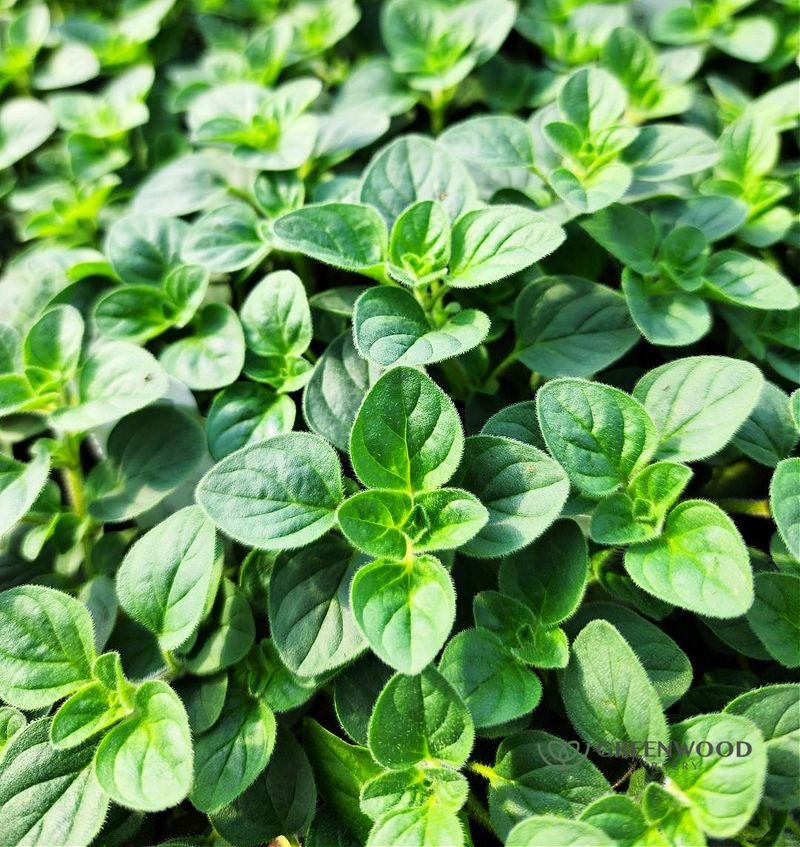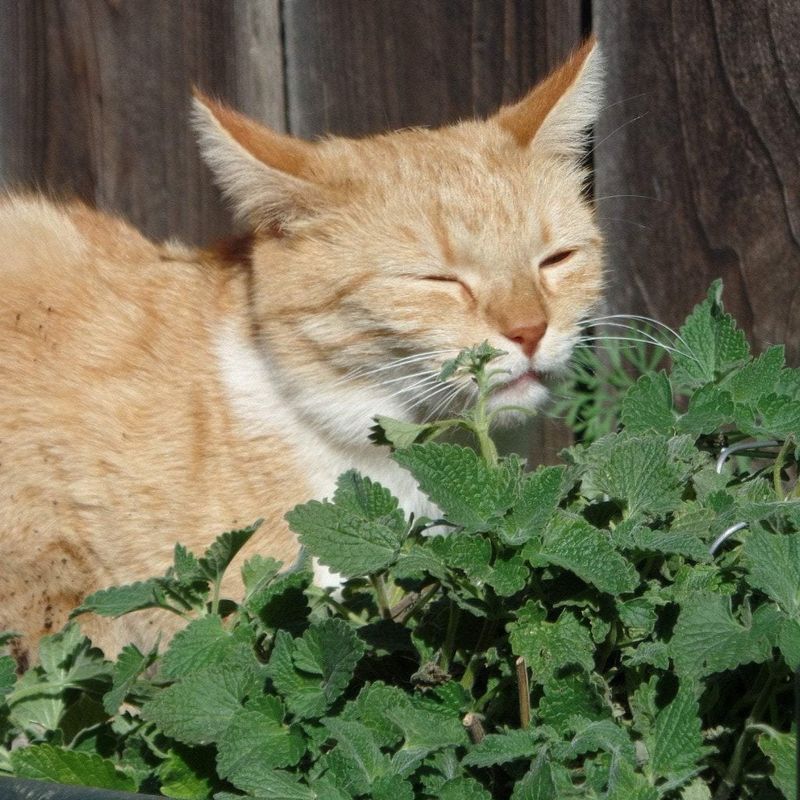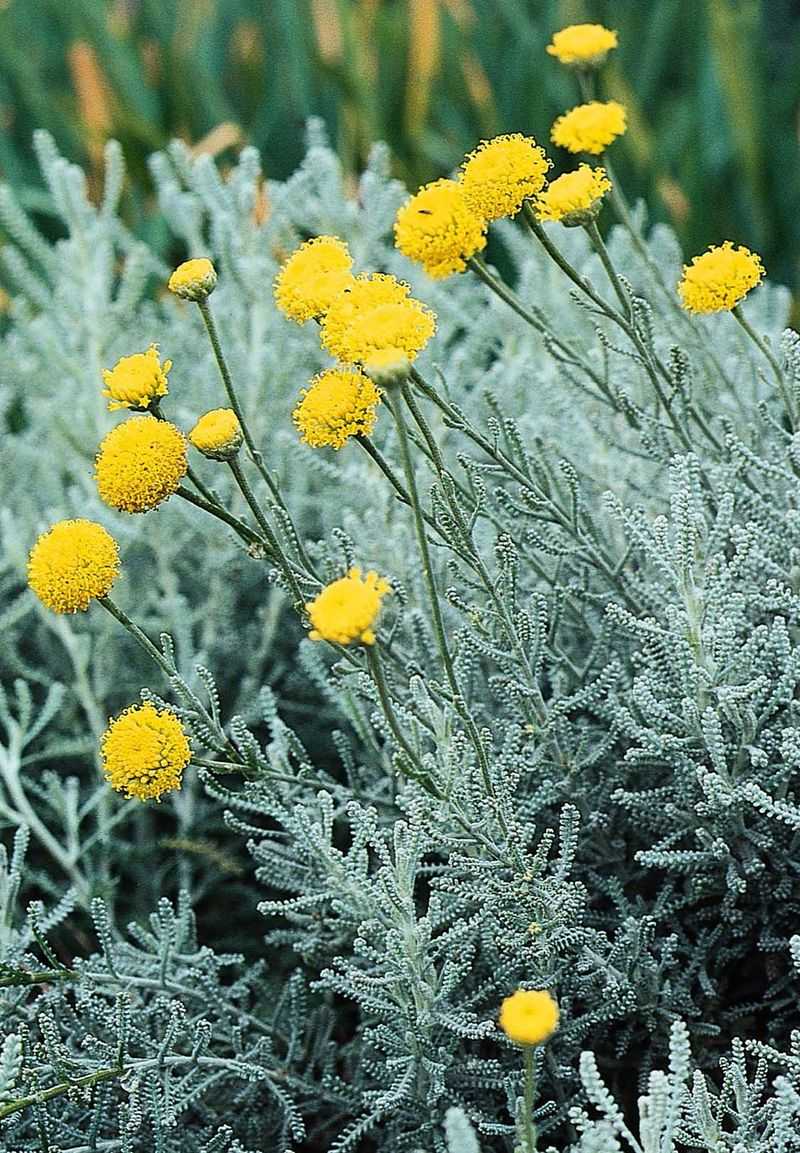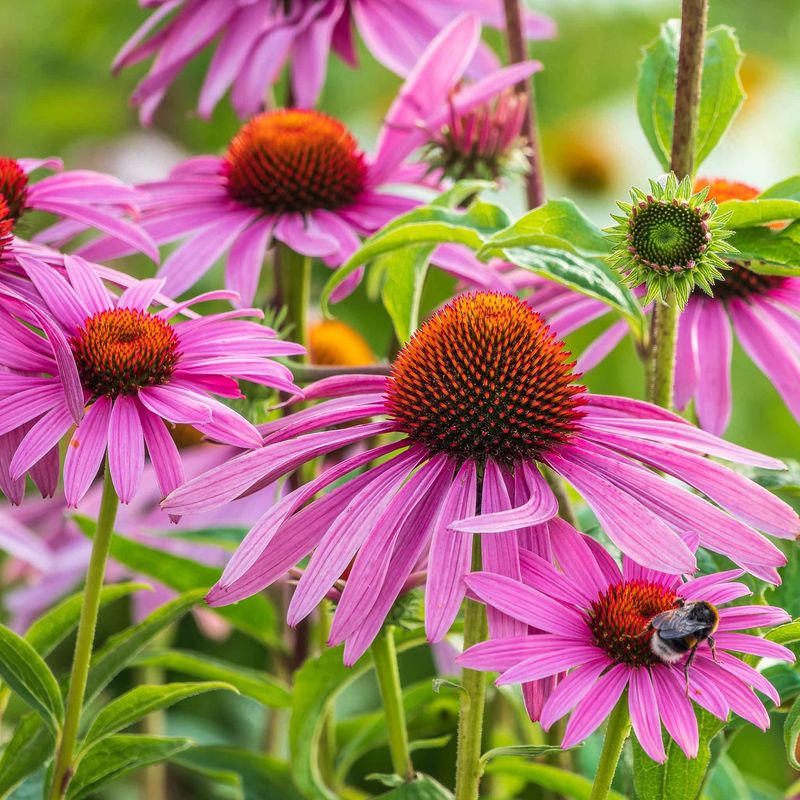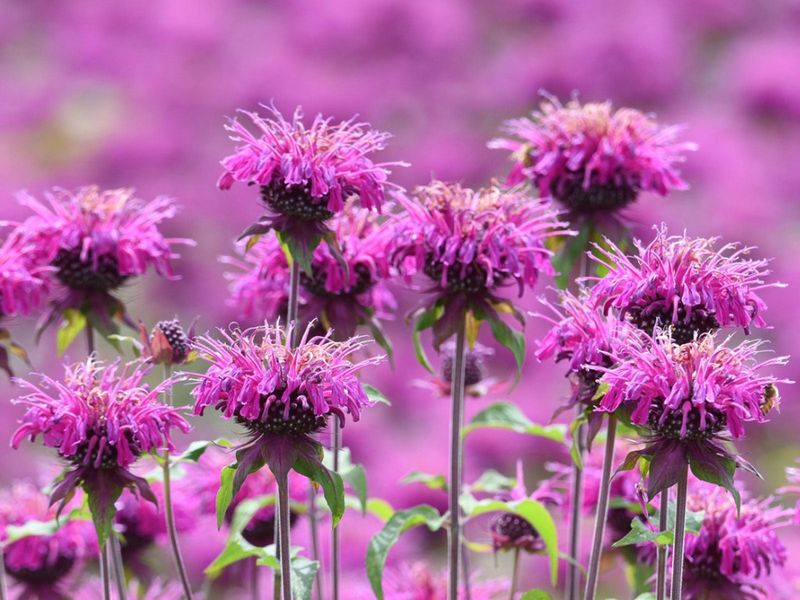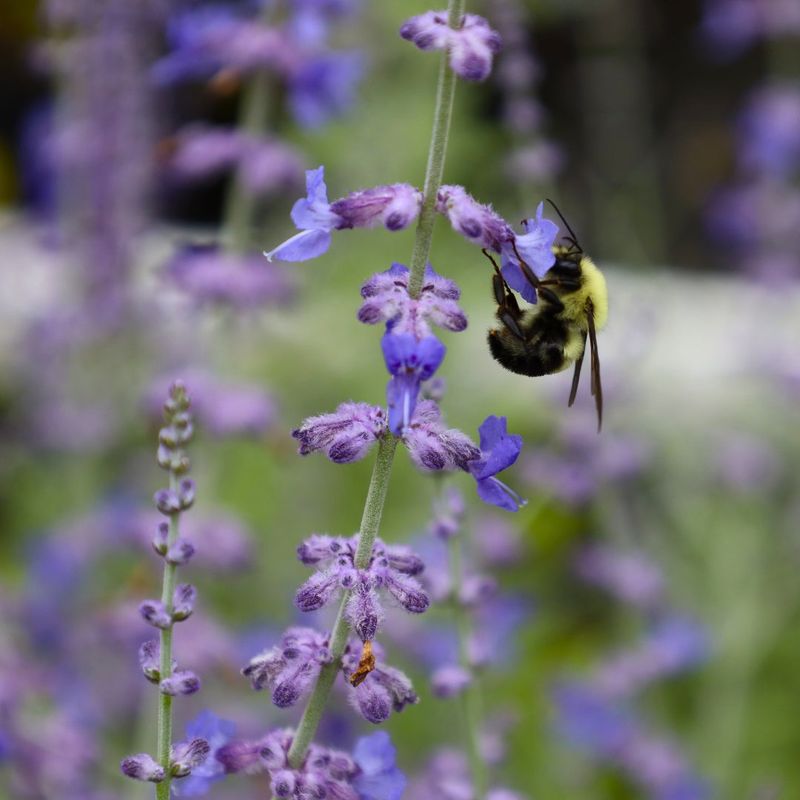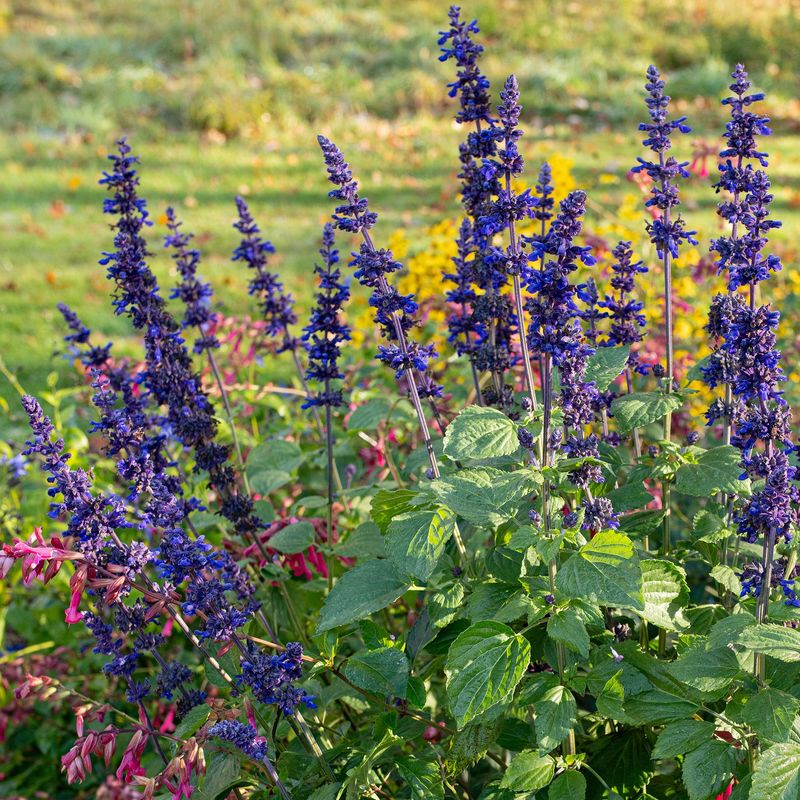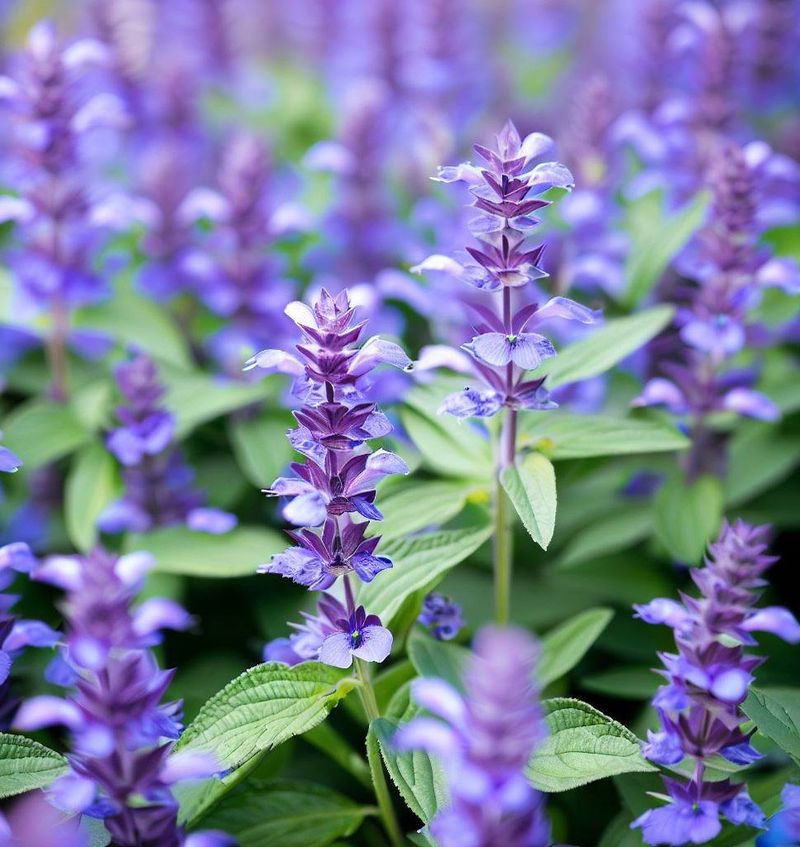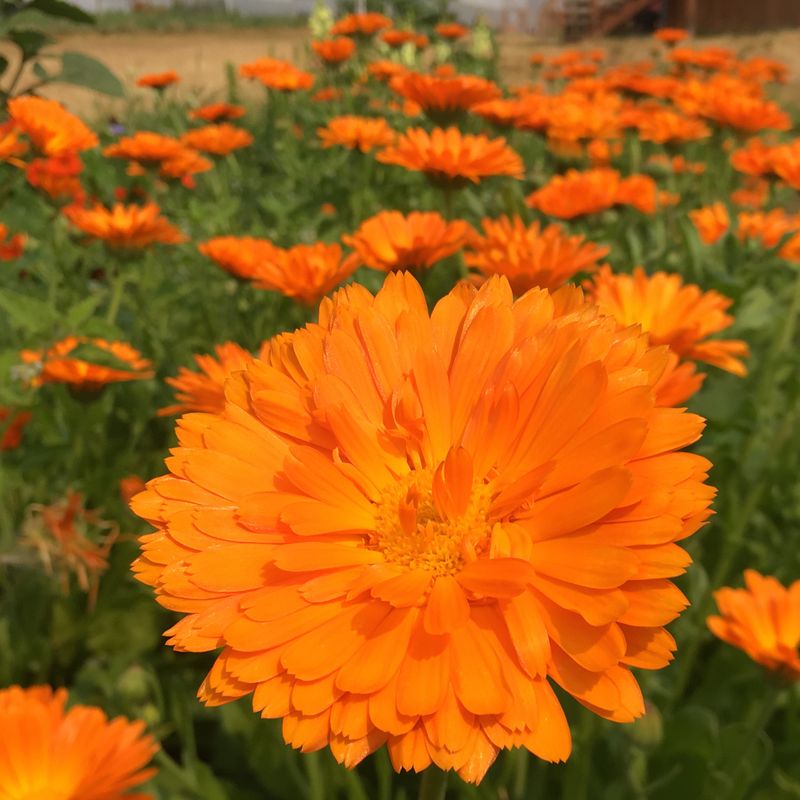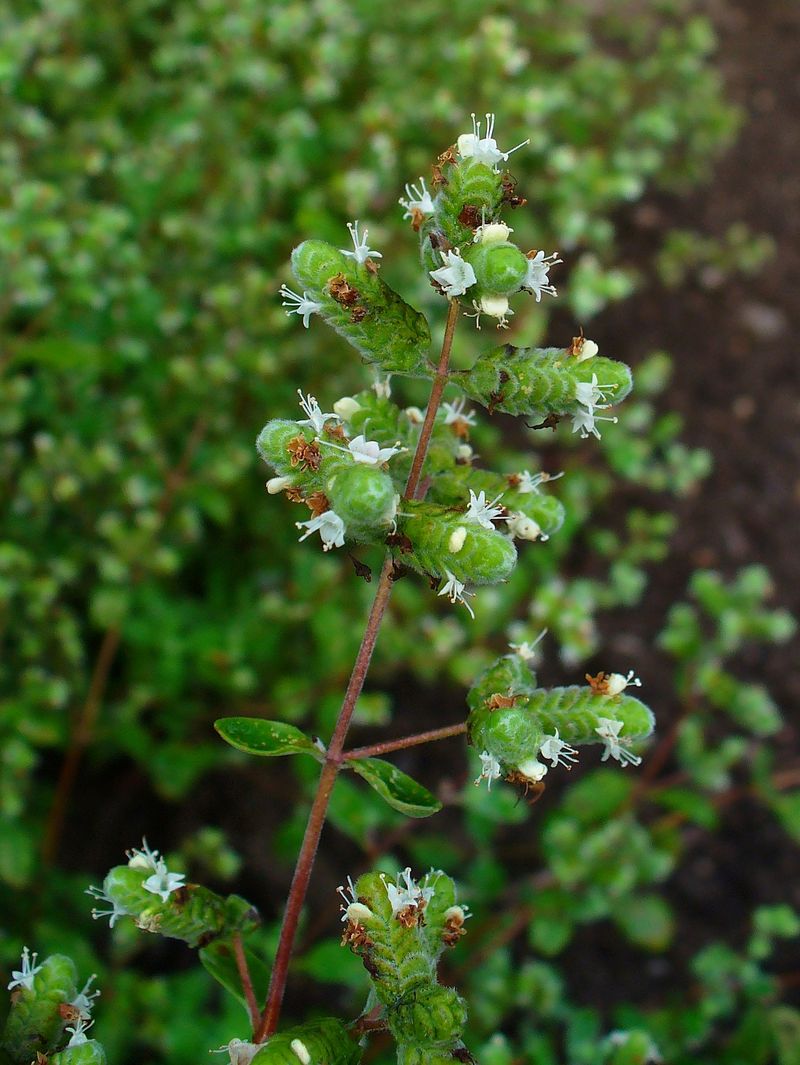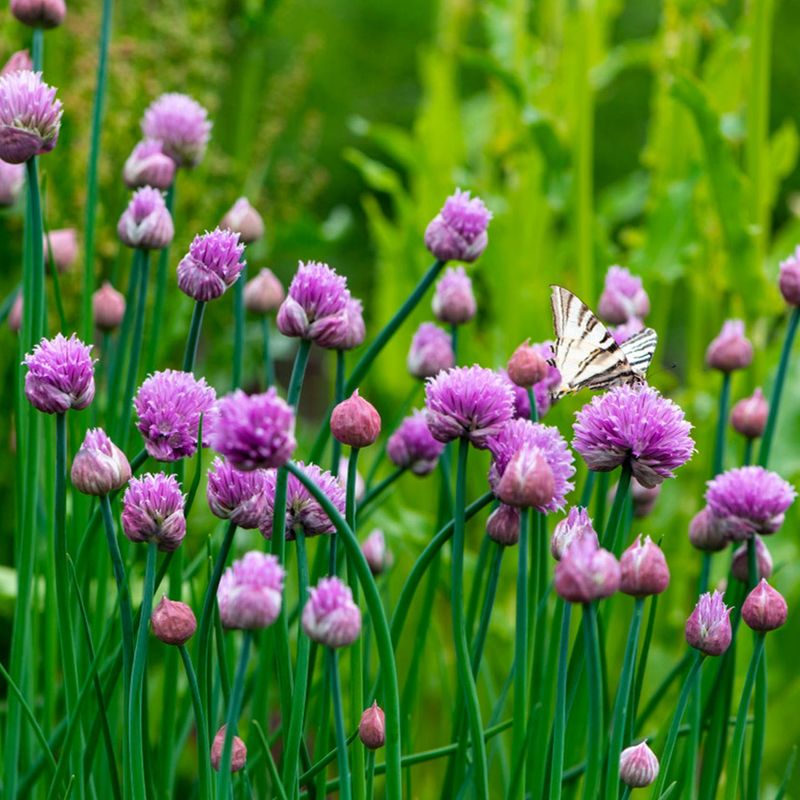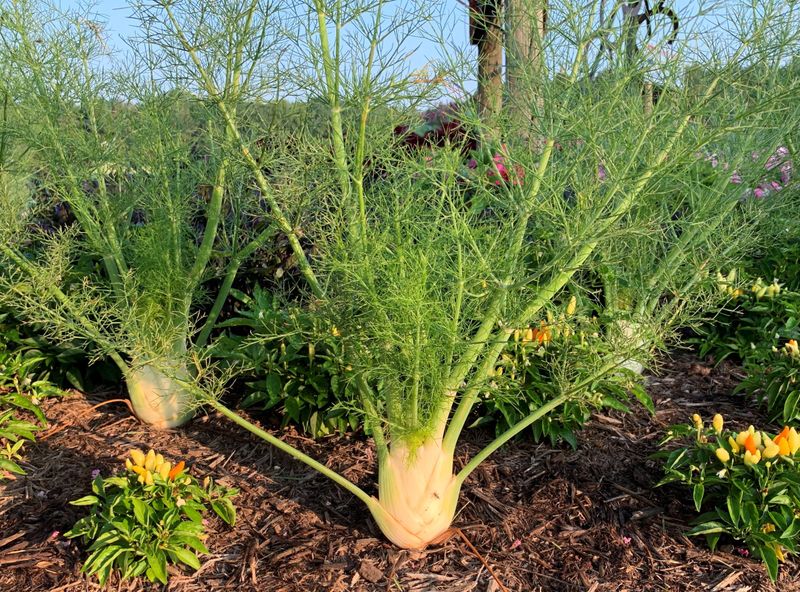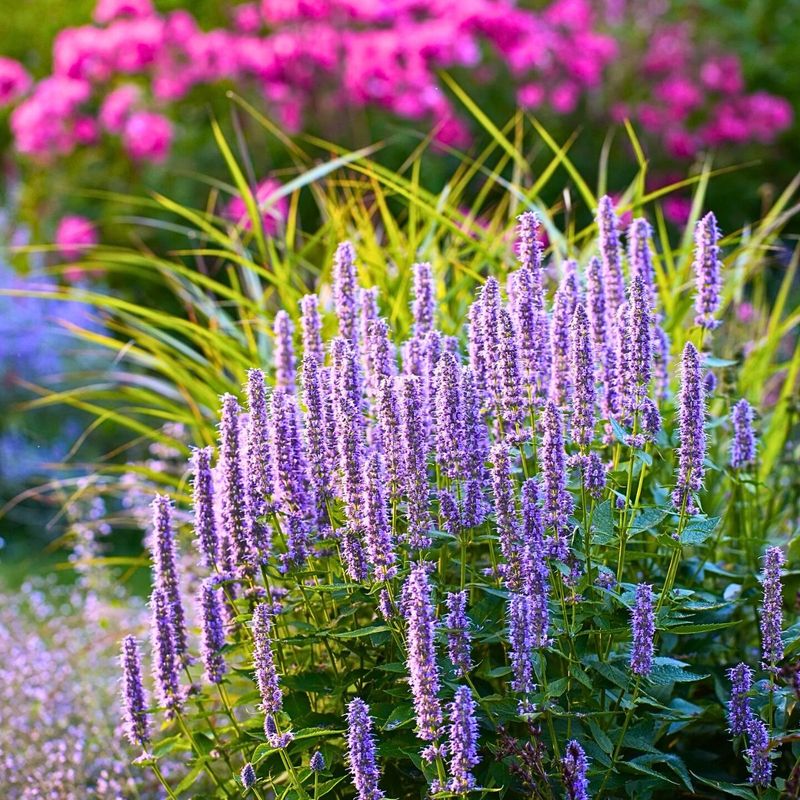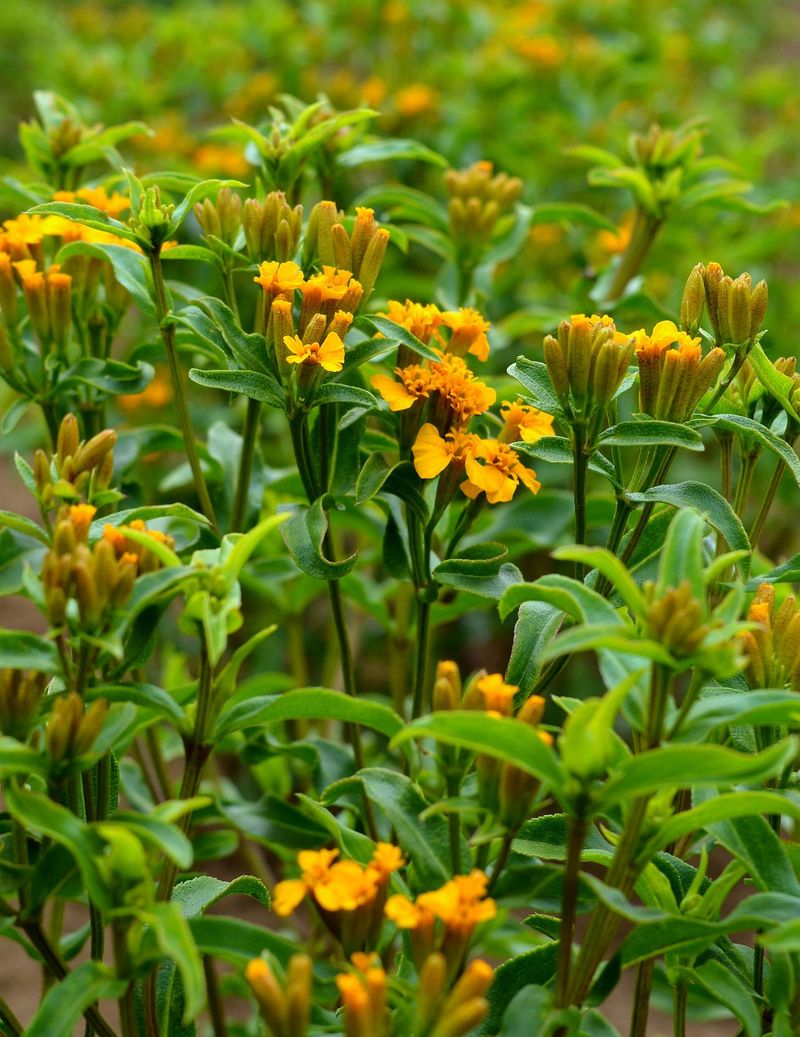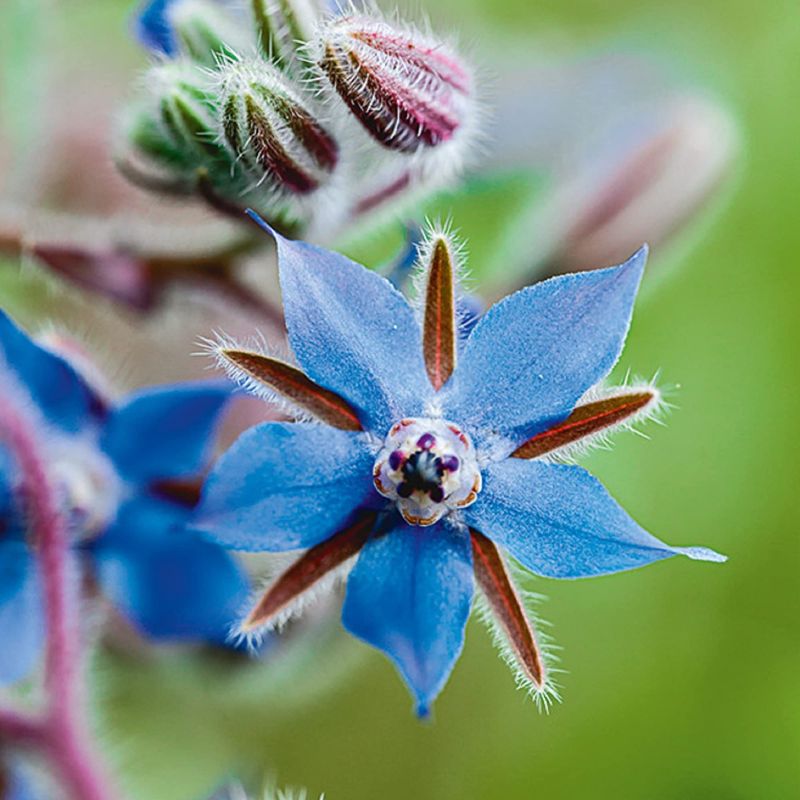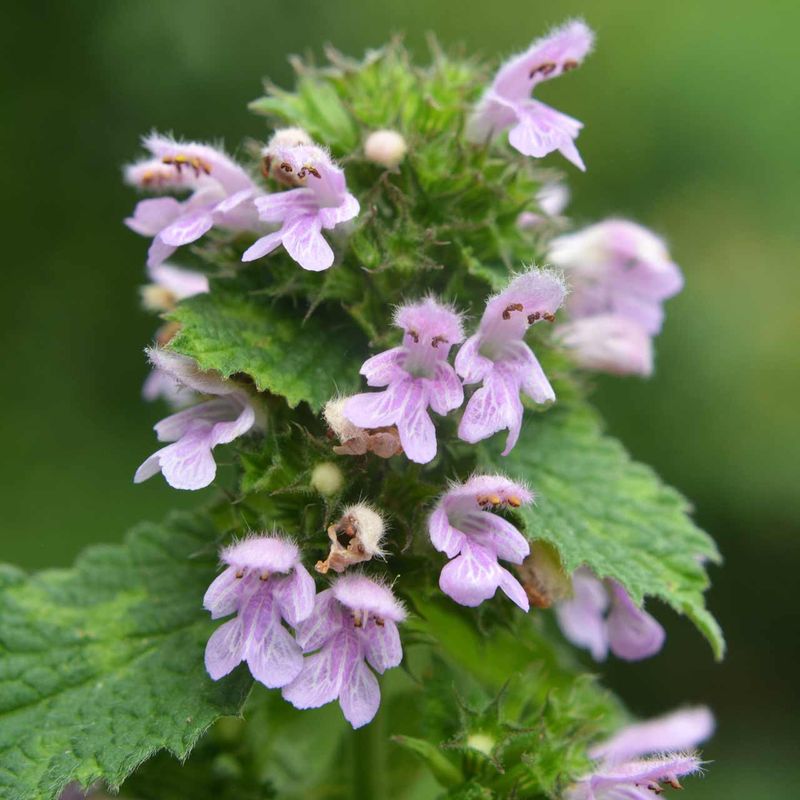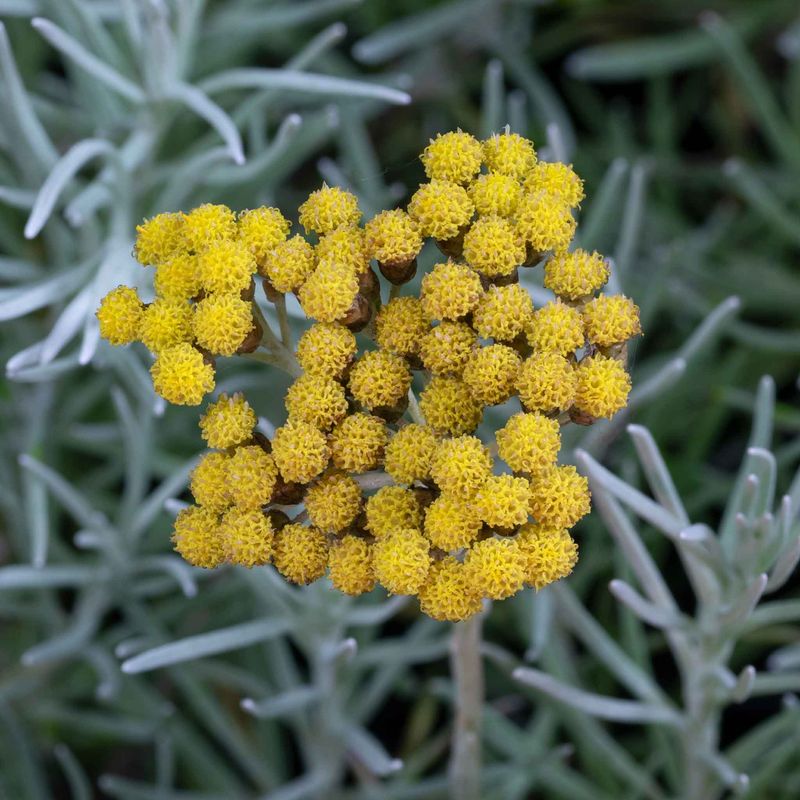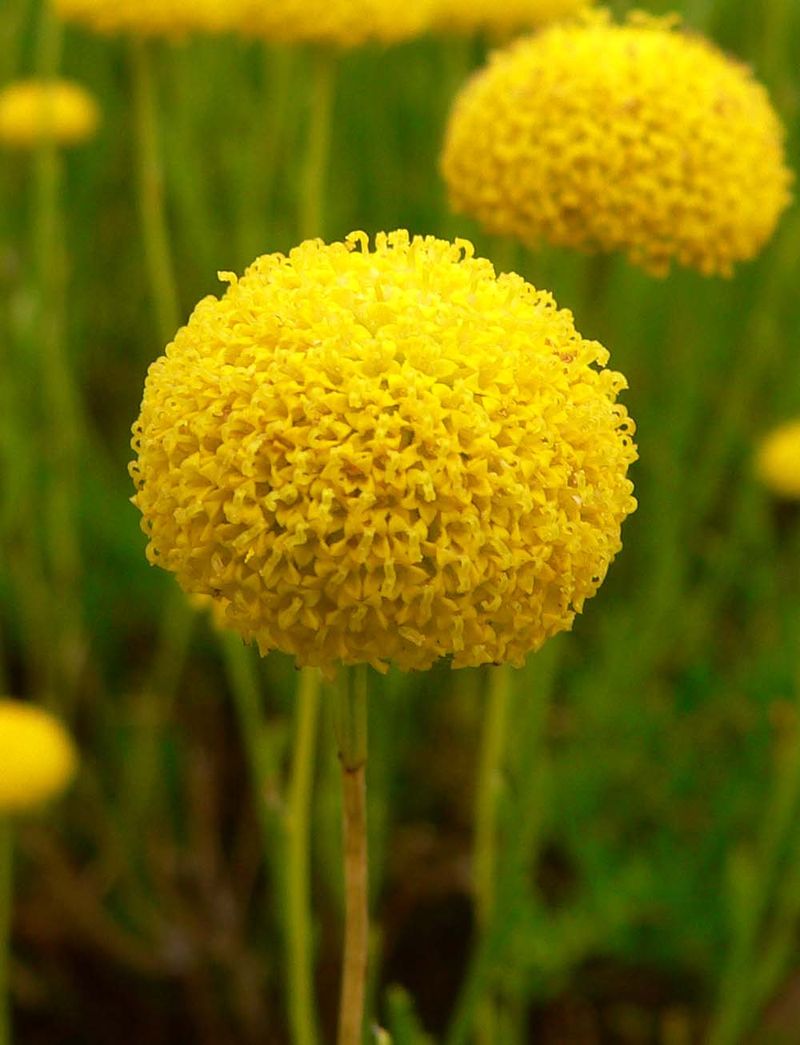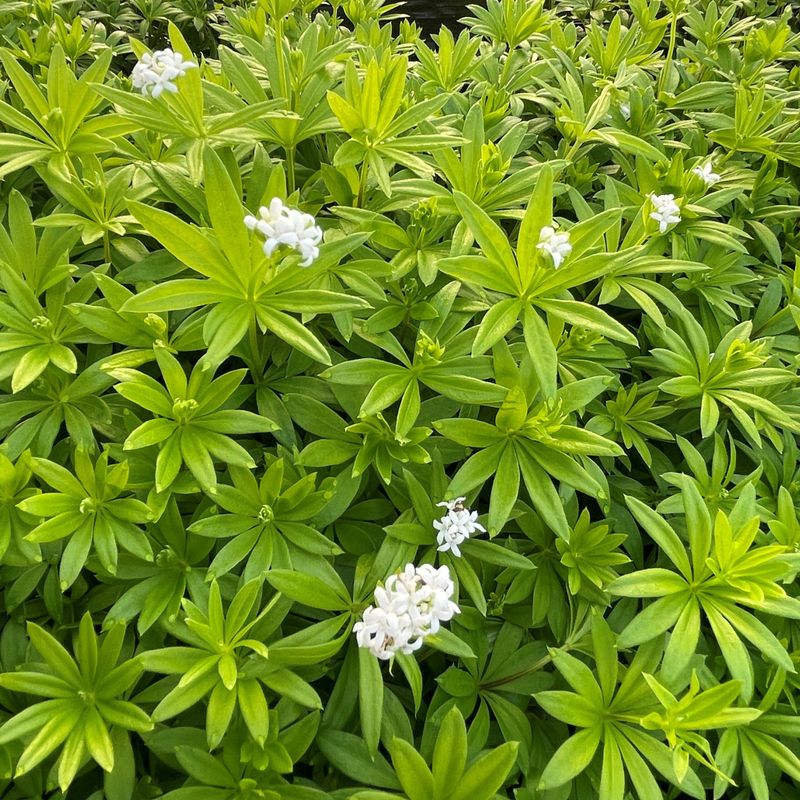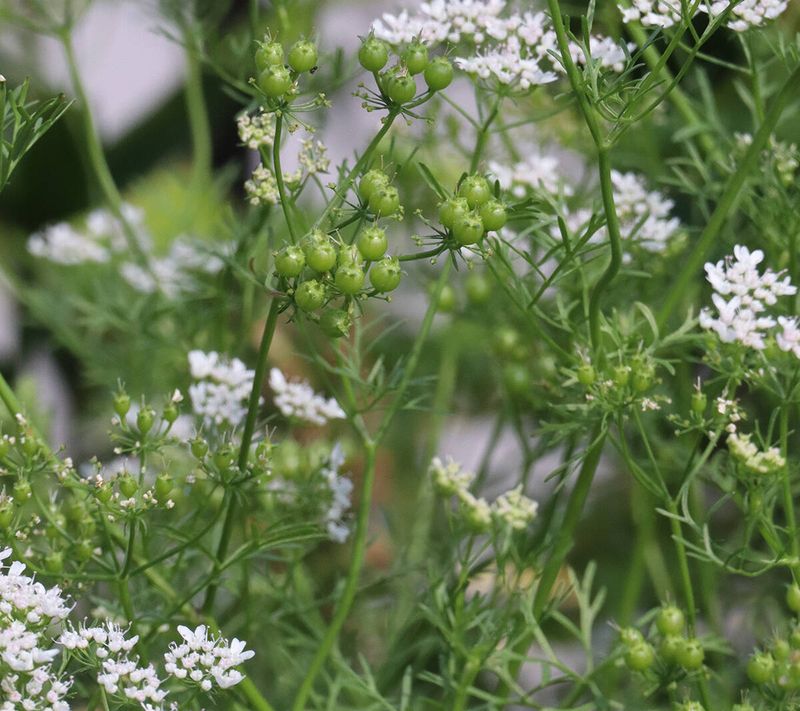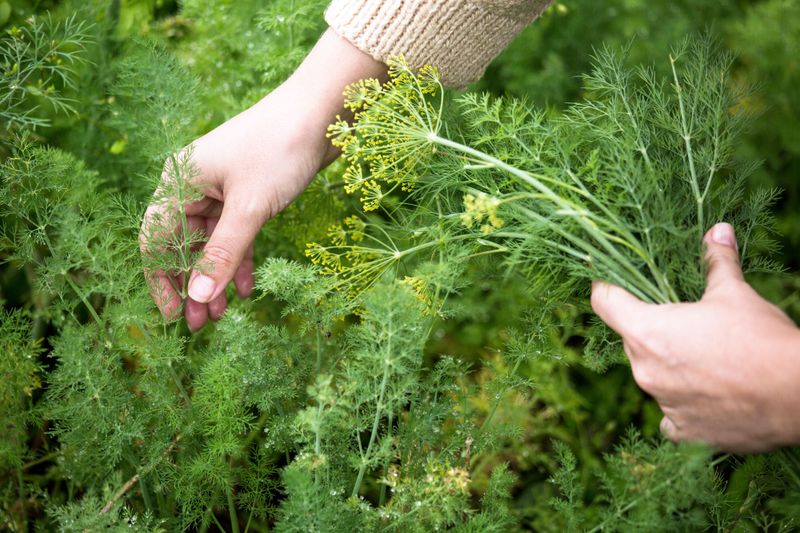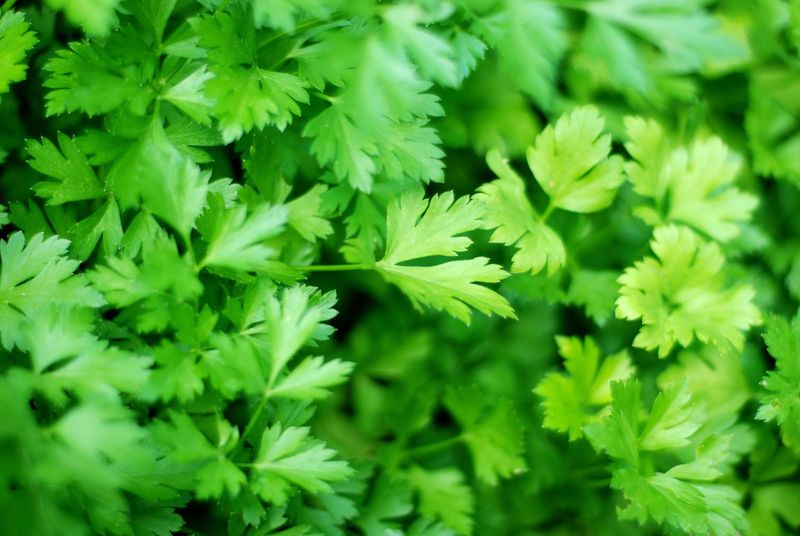I’m all for lavender’s calming vibes, but sometimes my garden craves a little variety. I’m sure you’ve felt the same. A little shake-up is just what the garden doctor ordered!
I’ve rounded up 30 stunning plants that not only rival lavender but bring their own personality to the party. Whether you’re after something bold or a bit quirky, these beauties will spice up your landscape.
Trust me, your garden will thank you for the fresh twist! So, grab your gardening gloves, and let’s get ready for a botanical adventure!
1. Rosemary
Rosemary has quickly become one of my favorite garden staples. Its needle-like leaves are not only a delight to smell but also a go-to in my kitchen.
I love adding fresh sprigs to roasted meats or homemade bread. It adds such a unique flavor. Plus, it’s incredibly hardy, thriving even in spots where lavender struggles.
I’ve noticed it repels pests too, so it’s a great companion plant. With minimal care and a Mediterranean charm, rosemary has become a garden essential I can’t imagine living without.
2. Sage
The rustic charm of soft leaves awaits you. Sage, a resilient herb, brings a touch of ancient wisdom to your garden. Its subtle fragrance and culinary versatility make it a great lavender alternative.
From teas to stuffing, sage complements various dishes effortlessly. The grayish-green leaves are soothing to the eyes, providing year-round interest.
With its drought-resistant nature, sage is a low-maintenance addition that thrives in sunny spots. Embrace the earthy allure of sage, and let your garden tell timeless tales.
3. Thyme
Imagine a carpet of tiny leaves and a gentle aroma. Thyme, with its petite, green leaves and small purple flowers, fits perfectly in any garden space.
Not only does it provide an evergreen ground cover, but its culinary uses are boundless. Thyme is a culinary staple, enhancing flavors of meats and vegetables with ease.
Its resilience to heat and drought makes it an ideal lavender substitute. Discover the charm of thyme, and let your garden flourish with this delightful addition.
4. Chamomile
Chamomile has a special place in my garden, with its white petals and cheerful yellow centers. Every time I walk by, I’m reminded of the calming, relaxing tea it makes.
It’s so easy to grow, thriving in well-drained soil, and it adds such a peaceful vibe to my outdoor space. Whenever I need a little moment of calm, I just brew a cup of chamomile tea from my garden.
It’s like having a natural remedy right at my fingertips! Chamomile’s soothing nature and subtle beauty make it a perfect addition to any garden.
5. Mint
You’re in for a refreshing surprise with this garden favorite. Mint, known for its invigorating scent and taste, is a versatile addition to any space.
It grows vigorously, making it a lively alternative to lavender. Mint thrives in shaded areas, perfect for those tricky garden corners.
Whether in teas, salads, or desserts, its culinary uses are endless. This robust plant spreads quickly, so a little containment is key. Enhance your garden’s aroma and flavor palette with the delightful mint.
6. Basil
Step into a world of culinary delight with this aromatic herb. Basil, with its lush green leaves, adds a touch of elegance to any garden. Known for its role in Italian cuisine, basil is the star of many dishes.
It thrives in sunny conditions, making it an excellent lavender alternative. Beyond its culinary prowess, basil’s fragrant leaves make a charming addition to your outdoor space.
Its rapid growth and easy maintenance appeal to gardeners of all levels. Experience the joy of growing basil and elevate your garden’s allure.
7. Lemon Balm
The garden’s zest comes alive with this companion. Lemon balm, with its lemon-scented leaves, entices both humans and bees alike.
Its foliage provides a cheerful presence in any space. Perfect for herbal teas and culinary uses, lemon balm is a versatile plant. It thrives in sunny areas and is a low-maintenance option for gardeners.
Its fragrant allure and soothing properties make it a wonderful lavender substitute. Invite a touch of citrusy freshness into your garden with the delightful lemon balm.
8. Oregano
A culinary adventure awaits with this robust herb. Oregano, with its small green leaves and pinkish-purple flowers, is a staple in Mediterranean cuisine.
Its rich flavor enhances a variety of dishes, from pastas to pizzas. This hardy plant thrives in sunny gardens, making it an excellent choice over lavender.
Its fragrant leaves add an aromatic touch to your outdoor space. Discover the joy of growing oregano and let your garden burst with flavor.
9. Catnip
Discover a feline-favored herb that brings joy to pets and gardeners alike. Catnip, with its heart-shaped leaves and white flowers, is a playful addition to any garden.
Known for its effects on cats, it also offers herbal uses for humans. Catnip thrives in various conditions, requiring minimal maintenance. Its aromatic leaves can be used in teas and natural remedies.
As a lavender substitute, catnip brings a touch of whimsy and practicality. Create a pet-friendly oasis in your garden with the enchanting catnip.
10. Lavender Cotton
A unique twist on your typical lavender. Lavender cotton, with its silvery foliage and yellow button flowers, adds a striking visual element to gardens.
Unlike its namesake, it offers a different scent profile but retains lavender’s charm. This drought-tolerant plant thrives in sunny spots, making it a great alternative.
Its compact size suits a variety of garden designs, from borders to containers. Embrace the beauty of lavender cotton and let your garden reflect its presence without the predictability of traditional lavender.
11. Yarrow
The untamed beauty of nature takes center stage here. Yarrow, with its feathery leaves and clusters of flat-topped flowers, adds a wild elegance to gardens.
Known for its medicinal properties, yarrow is a resilient plant that thrives in various conditions. Its drought tolerance and ability to attract pollinators make it a valuable lavender alternative.
Yarrow’s blooms come in various colors, adding a dynamic element to your garden space. Explore the rugged charm of yarrow and let your outdoor area flourish with life.
12. Echinacea
Echinacea is a favorite in my garden, with its pink flowers and cone-shaped centers. Not only does it add color, but it also packs a punch when it comes to wellness.
Echinacea thrives in sunny spots, and it’s a perfect lavender alternative, attracting pollinators like butterflies and bees.
Its hardiness makes it easy to maintain, and it’s one of the most reliable plants in my garden, providing a stunning display from summer to fall. Plus, it’s always a joy to see how much life it brings to the space.
13. Bee Balm
Get ready for a visual feast with this pollinator favorite. Bee balm, known for its large, eye-catching blossoms, is a magnet for bees and butterflies.
Its red flowers and lush foliage create a striking garden display. Thriving in sunny climates, bee balm is a robust lavender alternative.
This plant’s aromatic leaves can be used in teas, adding versatility to its beauty. With minimal care, bee balm brings life to any garden.
14. Russian Sage
A touch of airy elegance wafts through your garden. Russian sage creates a dreamy landscape. Known for its drought-tolerant nature, it thrives in sunny spots, offering a stunning floral display.
Russian sage’s ability to withstand dry conditions makes it a perfect lavender alternative. This plant’s aromatic presence adds a soothing touch to your outdoor space.
Discover the ethereal beauty of Russian sage and let your garden reflect its serene allure.
15. Salvia
Looking for a plant that adds both height and beauty to your garden? Salvia is the answer! With tall blue spikes, it brings a touch of elegance and drama to any border.
Known for its aromatic foliage, this perennial thrives in sunny spots and requires minimal care. Offering a wide range of colors, salvia provides a perfect alternative to lavender.
Its vertical presence not only enhances your garden’s visual appeal but also attracts pollinators, making it a great addition to any garden space seeking charm and grace.
16. Hyssop
A splash of soothing blues adds tranquility to your garden space. Hyssop, with its blue tubular flowers and aromatic leaves, is a serene addition to any herb garden.
Known for its medicinal properties, it offers more than just beauty. Hyssop thrives in well-drained soil, making it easy to grow.
This plant’s fragrant leaves add depth to your garden’s sensory experience. Embrace the calming presence of hyssop and discover its herbal benefits as an alternative to lavender.
17. Calendula
Calendula is like a ray of sunshine in my garden! With its bright orange blooms, it brings a cheerful pop of color to any space. Not only is it gorgeous, but it also has healing properties.
I love using calendula in homemade skincare remedies, making it a practical yet beautiful addition. It is super easy to grow, and attracts pollinators like bees and butterflies, filling the air with life.
Calendula’s colors are a joy to behold, and it’s a perfect lavender alternative for anyone looking to brighten up their garden.
18. Marjoram
Experience the culinary charm that graces your garden with this delightful herb. Marjoram is a staple in Mediterranean dishes.
Known for its flavor, it adds depth to sauces and meats. Marjoram thrives in sunny conditions, offering a fragrant and flavorful alternative to lavender.
This plant’s lush growth and easy care make it a great choice for herb gardens. Discover the aromatic world of marjoram and enhance your garden’s sensory delight.
19. Chives
Looking to add both beauty and flavor to your garden? Chives are the perfect choice! With their purple flowers, they bring charm and elegance to any kitchen garden.
Known for their mild onion flavor, chives are a versatile herb that enhances various dishes. Easy to grow in sunny spots, they offer a wonderful lavender alternative.
Beyond their culinary use, their delicate blooms attract pollinators and bring a touch of whimsy to your garden. Elevate your garden’s appeal with the perfect balance of flavor and flair with chives!
20. Fennel
Your garden’s allure takes a delightful twist with this versatile plant. Fennel, with its feathery leaves and yellow flowers, adds a whimsical touch to any garden.
Known for its licorice-like flavor, it’s a favorite in culinary creations. Fennel thrives in sunny areas and offers a unique alternative to lavender.
This plant’s towering presence and aromatic scent make it a captivating addition. Discover the multifaceted charm of fennel and let your garden be a culinary and visual delight.
21. Anise Hyssop
Bring a sweet touch to your garden with anise hyssop. Its purple flower spikes not only add a splash of color but also attract pollinators like bees and butterflies.
With a licorice-like scent, this versatile herb can be used in teas or culinary dishes, offering a fragrant alternative to lavender.
Let this delightful plant infuse your garden with charm, fragrance, and buzzing activity, creating a lively haven.
22. Tarragon
A culinary delight awaits with this aromatic herb. Tarragon, known for its anise-like flavor, enhances a variety of dishes.
Its slender leaves and tiny flowers add subtle beauty to any garden. Thriving in sunny conditions, tarragon is a flavorful lavender alternative.
This plant’s fragrant presence and easy care make it a gardener’s favorite. Explore the aromatic world of tarragon and let it elevate your garden’s charm and culinary potential.
23. Borage
Add a touch of whimsy to your garden with borage’s star-shaped blue flowers. Known for its cucumber-like flavor, it’s perfect for enhancing salads and drinks.
Thriving in sunny spots, borage is a fantastic alternative to lavender, bringing both beauty and utility. Its unique flowers and culinary uses make it a delightful addition to any garden.
Let borage bring a playful sparkle to your garden, while attracting pollinators and adding a refreshing flair to your culinary creations.
24. Horehound
A touch of rustic charm graces your garden with this ancient herb. Horehound offers both beauty and utility.
Known for its medicinal properties, it’s a staple in herbal remedies. Horehound thrives in sunny spots, providing a robust alternative to lavender.
This plant’s unique texture and aromatic presence enhance your garden’s sensory appeal. Embrace the historical allure of horehound and let your garden reflect its timeless charm.
25. Curry Plant
Spice up your garden’s fragrance with the curry plant, known for its distinctive curry-like scent and silver-gray foliage.
Though not for cooking, its aromatic appeal offers a sensory experience that adds depth to your garden. This beauty is a unique and intriguing substitute for lavender.
With its eye-catching yellow flowers and exotic fragrance, the curry plant is sure to captivate the senses and give your garden a spicy twist. Let it bring an unexpected charm to your outdoor space!
26. Santolina
Add a refined touch to your garden with Santolina, known for its silver-green foliage and sunny yellow blooms. Perfect for sunny gardens, it thrives with minimal care.
Its aromatic leaves provide a sensory delight, offering a pleasant fragrance in the air. Compact in size, Santolina is versatile and works well in borders or containers, making it a great alternative to lavender.
Let this elegant beauty elevate your garden’s aesthetic and charm while requiring little maintenance. With Santolina, you get both style and practicality in one plant.
27. Sweet Woodruff
A shady retreat is transformed by this delightful ground cover. Sweet woodruff, with its whorled leaves and star-shaped flowers, adds elegance to woodland gardens.
Known for its sweet scent, it’s used in potpourri and herbal remedies. This plant thrives in shaded areas, offering a refreshing alternative to lavender.
Sweet woodruff’s delicate blooms and lush foliage create a serene outdoor space. Embrace the enchanting allure of sweet woodruff and let your garden be a peaceful haven.
28. Coriander
Coriander has quickly become a kitchen favorite in my garden! With its leaves and tiny flowers, it’s a perfect blend of beauty and utility.
Its distinct flavor adds an aromatic kick to everything from salsas to curries. Coriander thrives in sunny spots and grows quickly, making it ideal for small or urban gardens.
It’s easy to care for and can transform your culinary experience right from your backyard. If you’re looking for a fragrant alternative to lavender that doubles as a tasty herb, coriander is the perfect pick!
29. Dill
Dill brings a touch of elegance and freshness to your garden with its feathery leaves and bright yellow blooms. Known for its distinctive flavor, it’s perfect for adding zing to pickles, sauces, and salads.
Thriving in sunny spots, dill serves as a fragrant alternative to lavender. Its light texture creates a soft contrast in any garden space.
Beyond its culinary charm, dill also attracts pollinators, making it a functional and beautiful addition. Let dill’s aromatic presence elevate your garden, while it delights both your senses and your taste buds.
30. Parsley
A culinary staple brings a fresh burst of green to your garden. Parsley is more than just a garnish. Known for its flavor and nutritional benefits, it enhances a variety of dishes.
Parsley thrives in sunny spots, offering a flavorful alternative to lavender. This plant’s lush growth and easy care make it a great choice for any garden.
Discover the versatile charm of parsley and let it invigorate your outdoor space with culinary and visual appeal.

